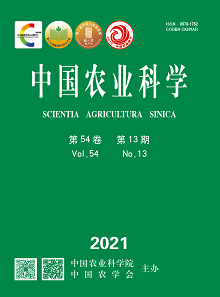【Objective】 The aim of this study was to clarify situation of the farmers’ nutrient application, so as to provide a theory base for the realization of stable and high yield, high nutrient use efficiency, and lower environmental pollution in dryland wheat production. 【Method】 A 9-yr survey of 984 farmers was carried out, and a yield based fertilizer recommendation method were used to analyze and evaluate their nutrient applications and the fertilizer reduction potential and economic-environmental benefits in Loess Plateau. 【Result】 The farmers’ wheat yield was lower, with the average of 3 711 kg·hm-2, and they were allocated into three groups as: low (≤3 200 kg·hm-2) and moderate (3 200-4 220 kg·hm-2), respectively, accounting for 56.0% and 18.1% of the total farmers. Farmers’ nitrogen (N), phosphorus (P2O5) and potassium (K2O) applic-2, 159.8 kg P2O5·hm-2 and 92.0 kg K2O·hm-2. And the proportion of the high-application farmers were N 68.7% and P2O5 65.1% and K2O 57.9%, respectively, which was large in low-yield level. Generally, these high-application farmers were recommended to reduce 24.1 kg N·hm-2, 12.8 kg P2O5·hm-2, and 6.2 kg K2O·hm-2, and the reduction range was N 15.9%, P 16.7% and K 16.7%, respectively, but these very high-application farmers were recommended to reduce 250.9 kg N·hm-2, 205.7 kg P2O5·hm-2, and 124.6 kg K2O·hm-2, and the reduction range was 66.5%, 76.7%, and 80.0%, respectively. Then, their economic effects increased by 251 yuan/hm2 and 3 425 yuan/hm2, 4.0% and 55.0%, NPK agronomic efficiency increased by N 18.8%, P 23.2%, and K 22.1% for the high farmers, and N 192.5%, P 321.3%, and K 388.1% for the very high farmers. NPK partial productivity increased by N 20.2%, P 23.7%, and K 19.2%, and N 210.4%, P 317.9%, K 388.1%, respectively. According to the estimation, the environmental impact of reducing nitrogen application was that emission of the N-pollutant reduced, such as N 2O emission decreased by 0.3 kg N2O·hm-2 and 6.3 kg N2O·hm-2, 11.2% and 72.5%, NH3 volatilization decreased by 14.1 kg NH3·hm-2 and 90.7 kg NH3·hm-2, 20.8% and 62.8%, and NO3 leaching decreased by 3.1 kg NO3·hm-2 and 231.1 kg NO3·hm-2, 4.9% and 79.6%, respectively. Total nitrogen pollutants (including N2O emission, NH3volatilization and NO3 leaching) reduced 17.4 kg·hm-2 and 328.1 kg·hm-2, with 13.1% and 74.0%, respectively. In total, 12.5 kg N·hm-2 and 130.9 kg N·hm-2 with 65.0 yuan/hm2 and 683.3 yuan/hm2were saved, respectively. 【Conclusion】 In this paper, based on the wheat yield, the farmer's fertilization was evaluated, and the potential of reducing excessive fertilization was estimated, and the economic benefits and the effect of the reducing nitrogen-pollutants emission were analyzed through reducing fertilizer application. It was known that the farmers with high and very-high fertilizer application not only had different potential for reducing fertilizer application,such as 24.1-250.9 kg N·hm-2, 12.8-205.7 kg P2O5·hm-2, 6.2-124.6 kg K2O·hm-2, but also farmers' economic benefits was improved by 251-3 425 yuan/hm2, and fertilizer agronomic efficiency was improved by N 18.8%-192.5%, P 23.2%-321.3%, K 22.1%-388.1%,and partial productivity was improved by N 20.2%-210.4%, P 23.7%-317.9%, K 19.2%-388.1%, and the emission of total nitrogen pollutants (including N2O, NH3and NO3) was reduced by 17.4-328.1 kg·hm-2. This study comprehensively and systematically revealed the resource and environmental problems, challenges and opportunities in the current dry wheat production, which provided a certain theoretical basis for an environment-friendly fertilization with saving cost and increasing efficiency.









